For some people, the thought of organizing a work calendar is enough to make them run for the hills.
Believe it or not, creating a work calendar can actually relieve the stress of a busy work schedule. If you’ve been putting off creating your own work schedule, or you’re worried about where to start, you’ve come to the right place.
We’re going to take a look at what a work calendar is, the benefits of using work calendars, and how using work management software makes the process much less daunting.
What is a work calendar?
Put simply, a work calendar allows businesses to plan and track their work schedule.
They usually feature the following information:
- Tasks and activities
- Approaching deadlines
- Upcoming meetings, appointments, or events
- Employee working hours
- Holiday and vacation days
Work calendar software is an essential ingredient for your planning success, whether it’s for your personal working day or planning a fleet of work shifts.
What is work calendar software?
Unlike a regular calendar, work calendar software allows users to create automations to manually update their calendars and send reminder notifications. As a result, businesses can streamline the entire process, making it much less time-consuming and not quite so daunting.
With the right software, you can even choose the best format to view your calendar for work. Whether that’s as an actual calendar, a timeline, or even a Gantt chart. Trust us when we say that it makes it much easier to manage your work schedule.
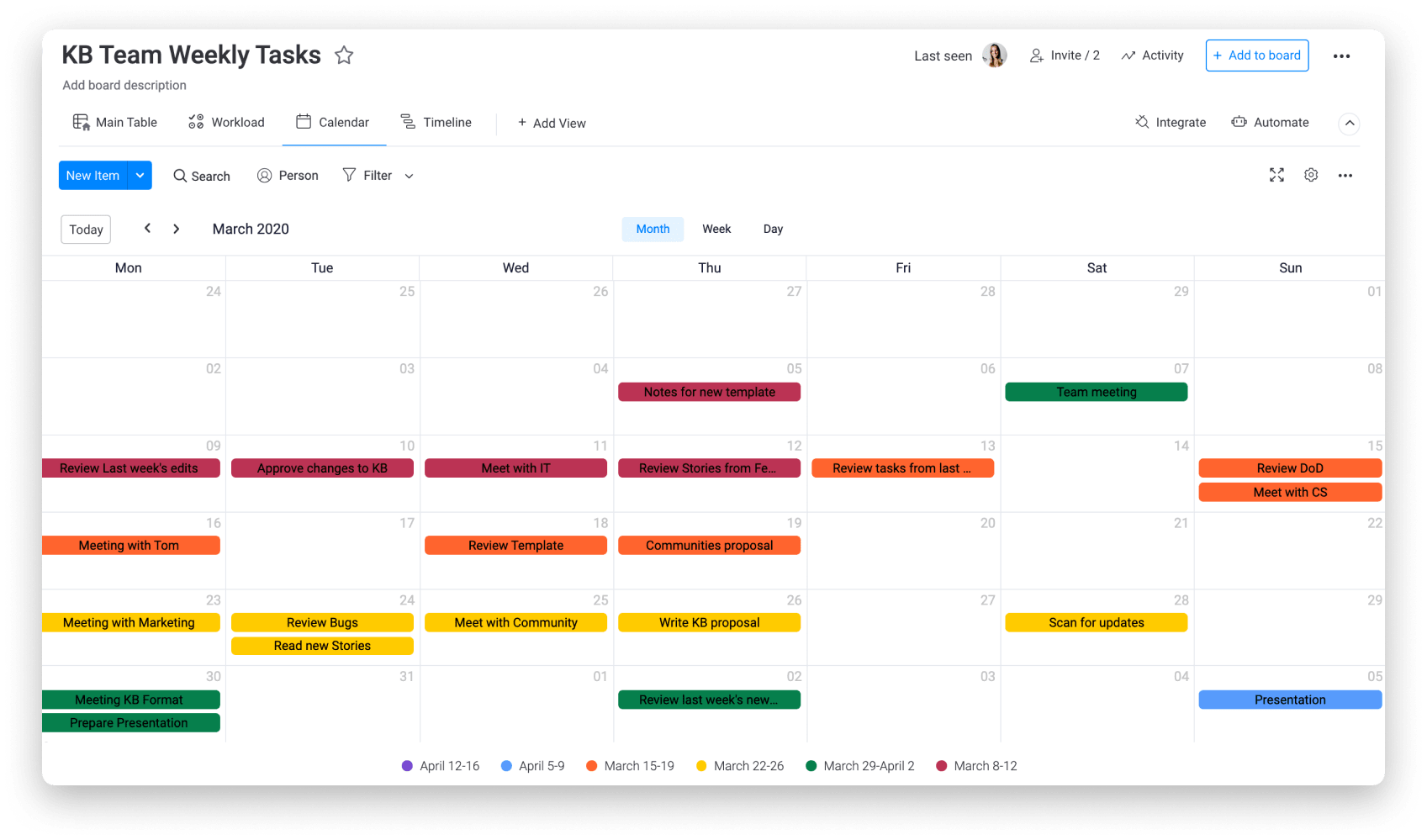
What are the benefits of using a work calendar?
There must be a reason 70% of adults use a digital work calendar, right? So let’s see what all the fuss is about and take a look at some of the benefits you could reap if you create a work schedule calendar.
1. Stay organized
Using a work calendar helps keep you and your team organized. With one glance at your calendar, you can see exactly what work you need to do, how long it’s going to take, and when it’s due. As a result, it makes keeping yourself organized much easier. And if you use a work management platform like monday.com, you can even filter your calendar to help you organize your tasks even further. Whether that’s by status, due date, or team member, you can choose how you want to organize your calendar and visualize your deadlines.
![]()
2. Manage your time efficiently
There are two ways that work calendars help businesses to manage their time efficiently:
- Time management: Using a work calendar allows you to assign timeframes to specific tasks. As a result, you can manage your time more efficiently.
- Setting boundaries: You can easily set boundaries for work-time and downtime with a work calendar, which is especially helpful for those who work remotely.
Having said this, we do appreciate that it’s not always easy to estimate exactly how long a task will take — that’s where time tracking can be helpful. Work management software allows you to track how much time you spend on each task so you can understand how accurate your time estimations are, and make better predictions for future tasks.
![]()
3. Improve accountability
Work calendars provide employees with a set amount of time to complete their work. As a result, they get a sense of accountability and motivation to get their work done on time.And if you’re using a shared calendar, teams have clear visibility over their own tasks as well as everyone else’s. So not only are they accountable for their own tasks, but also for their role in the entire project.
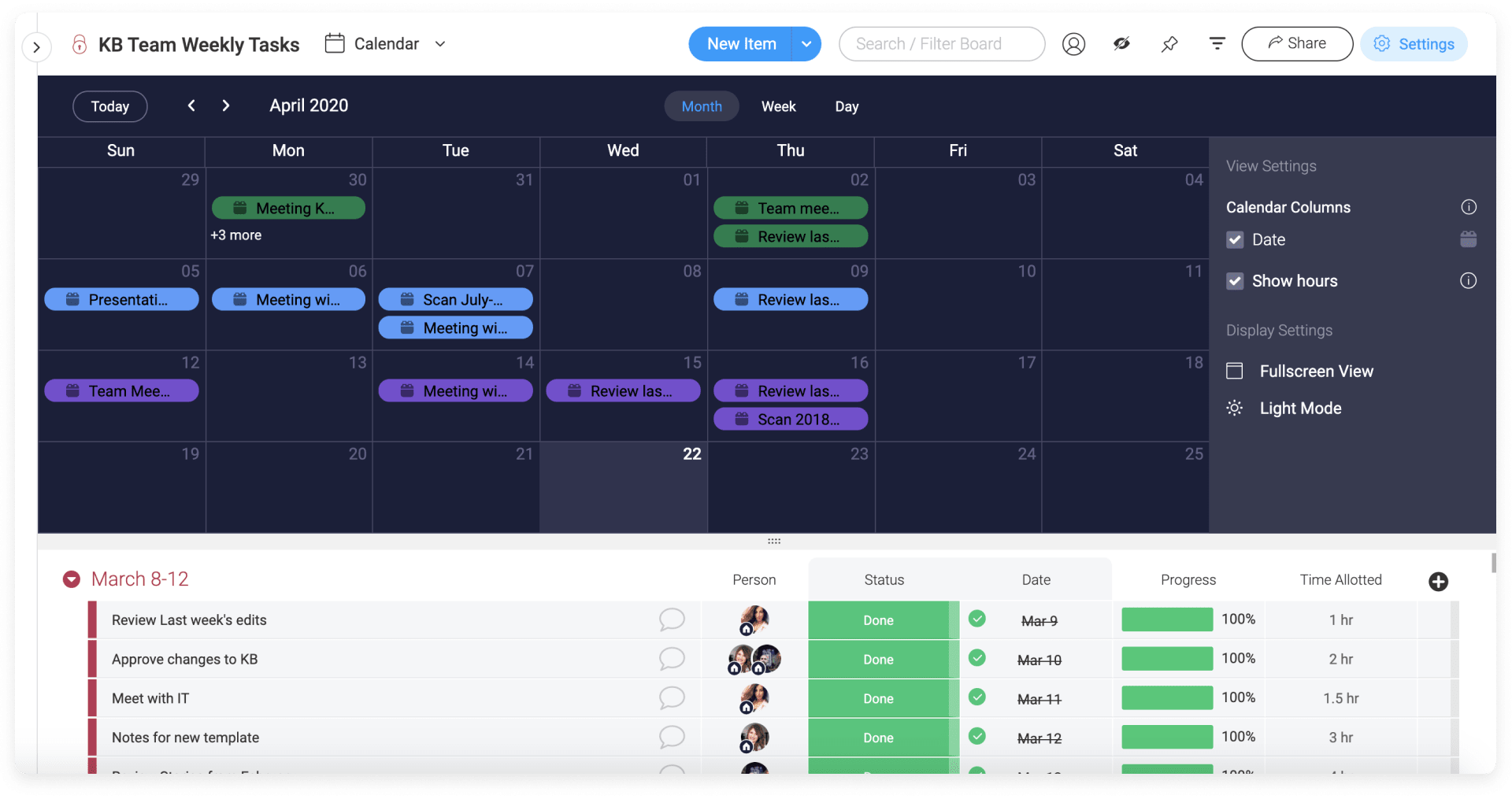
4. Keep track of productivity
Work calendars are a great way to track productivity because they allow you to visualize the work that needs to be completed in the days, weeks, or months ahead. Imagine it’s Monday morning (yawn). You review your work calendar to see the work that’s due in the week ahead. You work your way through the tasks as best you can. Come Friday, you reflect on the scheduled work, and review how everything has progressed. From this review, you might identify that you weren’t quite as productive as you’d hoped. Or maybe you’ve completed everything ahead of schedule, and you had time to spare.
Either way, you’ve accurately reviewed your productivity, and identified any room for improvement going forward. And if you’re using work management software, you can even track the progress of your tasks in your calendar in real-time.
![]()
Find out more about using a project tracker to optimize efficiency.
Create a productive work calendar with monday.com
As a Work OS, monday.com makes it easy for teams to work together and create the perfect workflow.
Our software is intuitive, flexible, and collaborative — and that’s exactly why monday.com is the perfect platform for creating your next work calendar.
No matter how complex your work schedule is, our software has features that make it easy to create an intuitive calendar.
1. View your schedule in our calendar view
Turn any of your project boards into a calendar with our calendar view layout so you can see your entire workflow in a calendar, which you can choose to view by day, week, or month. You can even edit the items in your project directly from the calendar. Simply click on the task in the calendar, and you can change any of the details there and then.
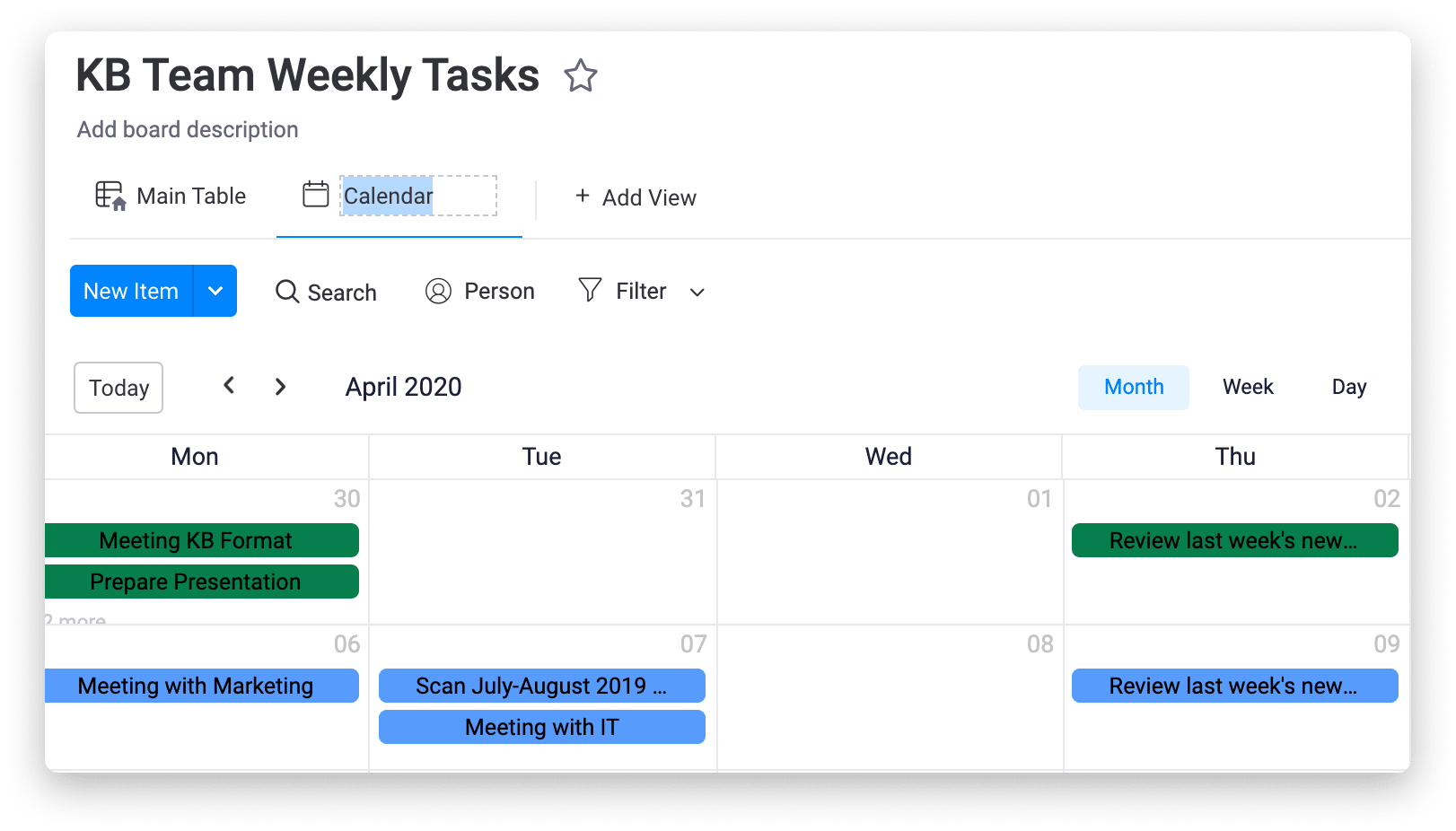
2. Add the calendar widget to your dashboard
monday.com has customizable dashboards that enable project managers and team leaders to view the most important information on one screen. Within those dashboards, we have widgets, like the calendar widget. It allows you to see your upcoming tasks in the calendar in one place, without having to manually look through the calendar.
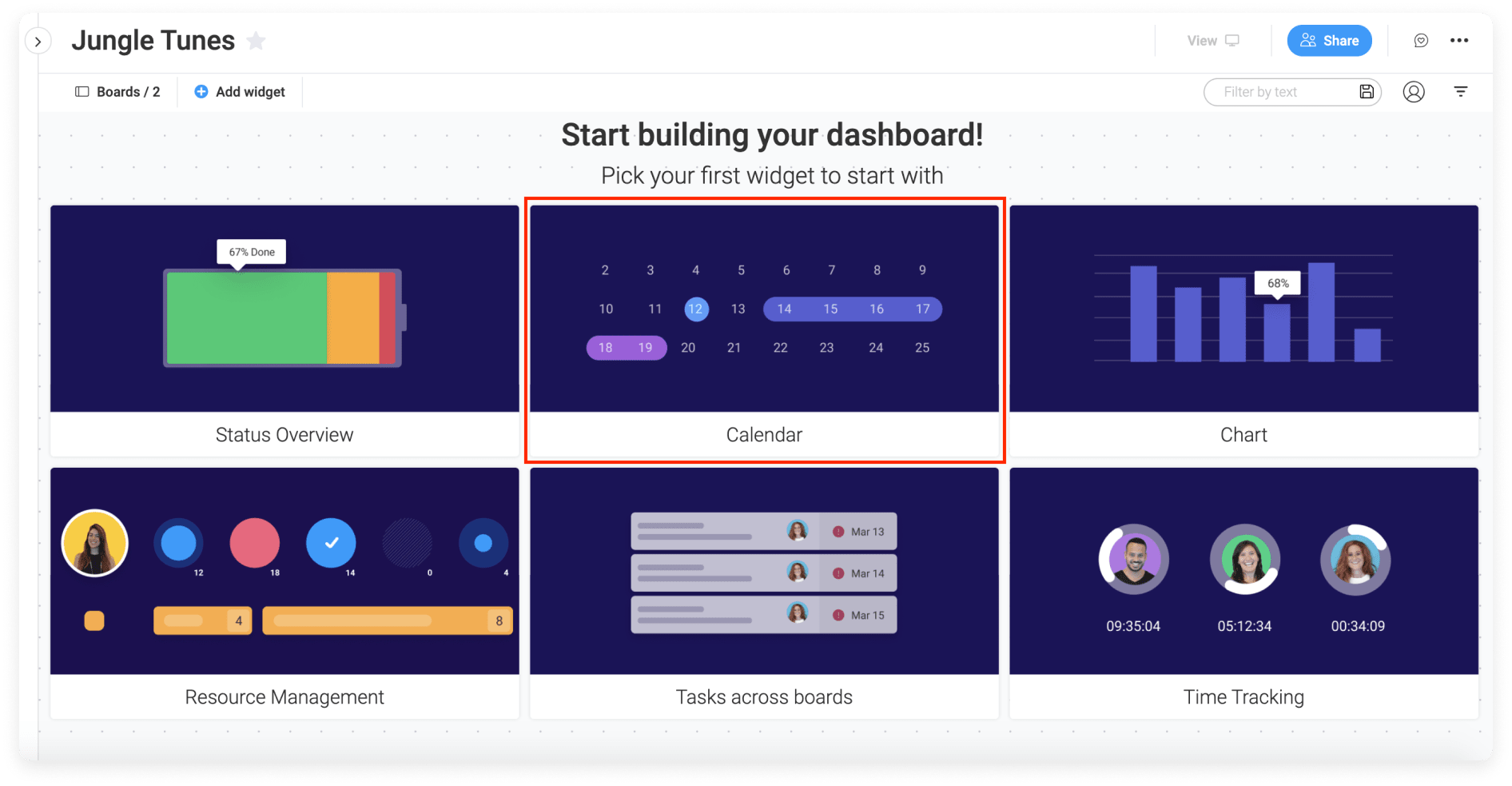
3. Integrate your existing calendar
Even if you are already using a calendar app to plan and manage your work, you can make an easy transition by integrating external calendars directly into our platform. Outlook calendar or the Google calendar app tasks, appointments, and meetings can be synced with our platform so you’ll never miss a deadline again. Calendars that work without the ability to integrate across tools can present a real challenge, especially for cross-collaboration.

4. Prioritize the most important tasks
If you have a pretty full calendar, prioritization is a great way to make sure that the most important tasks take precedent. Ranging from low to high — and everything in between — our board filters allow you to categorize every task in your calendar in order of priority statuses that you customize with color and text.
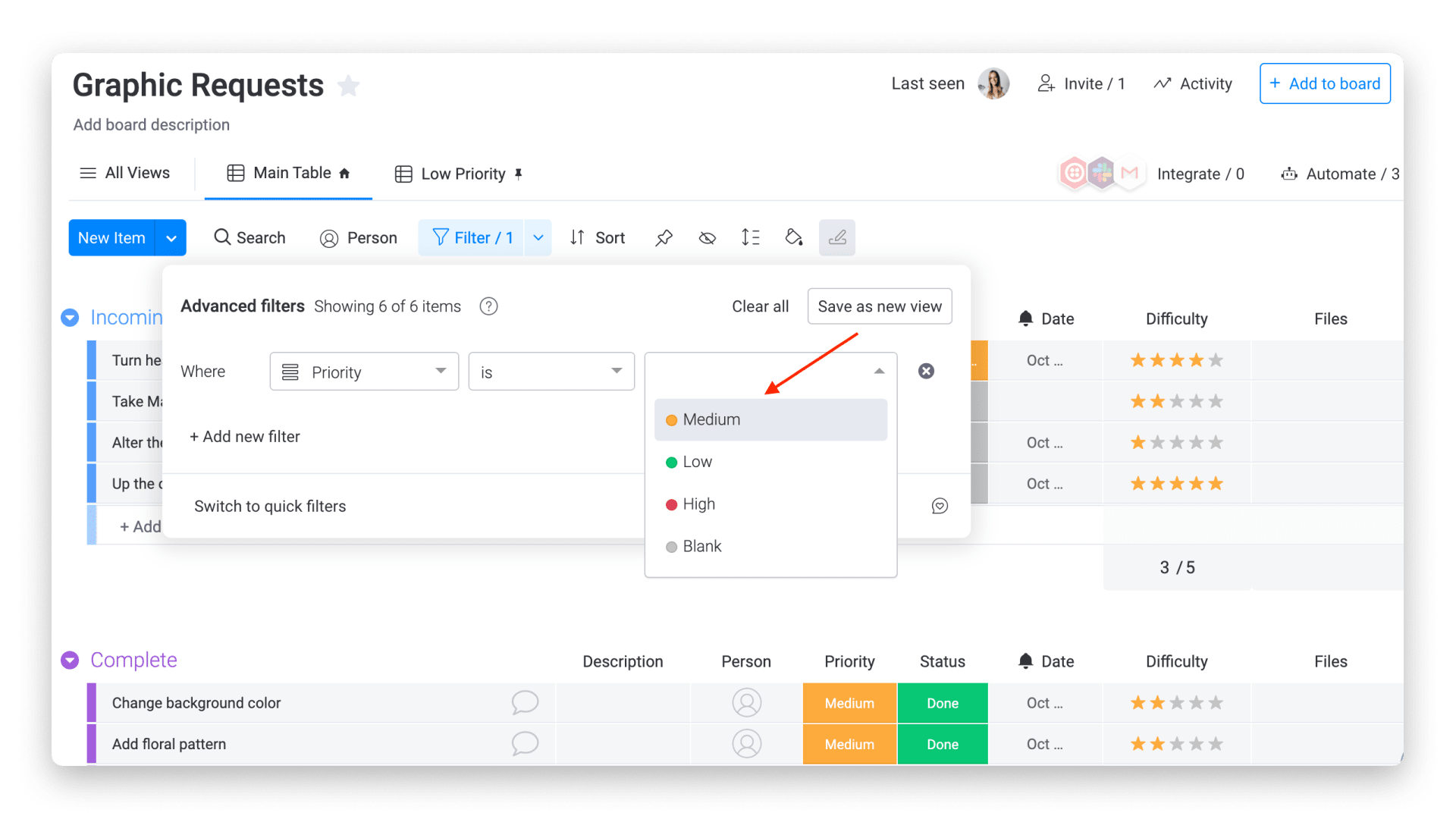
5. Share your team calendar
monday.com gives users the ability to share their team calendar. That way, the entire team can work from one central location for all of their scheduling needs. With access to a shared calendar, teams can also see how their team is progressing, what everyone else is up to, and how their work feeds into the project.
Maximize your organization and creativity again with color-coding and assigned owners so team members can use filters to see exactly what they want.
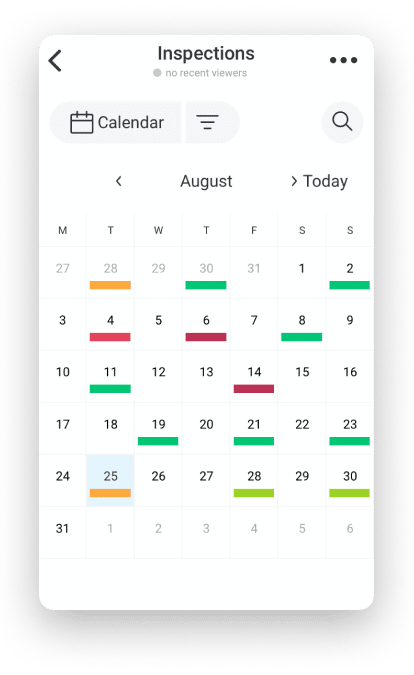
Build your dream work calendar
Because work calendars are at the crux of workplace and project management success, it’s important to use a work management platform that can make the process much more efficient.
If you want to get started fast with monday.com, we’d recommend starting with our work calendar template.


